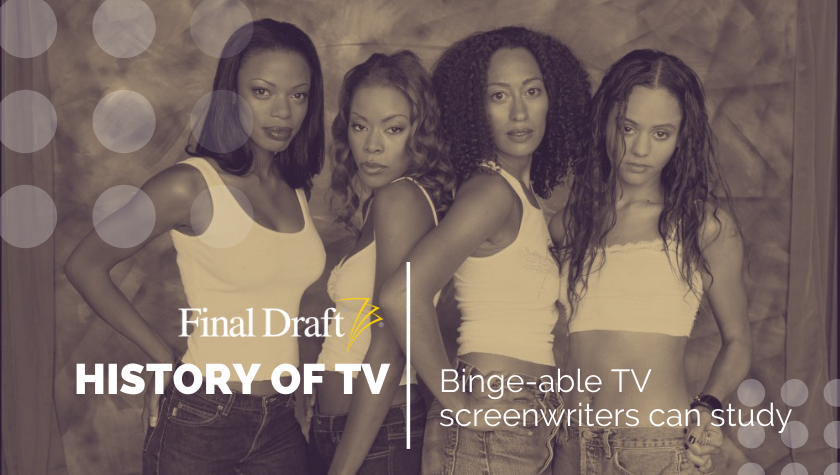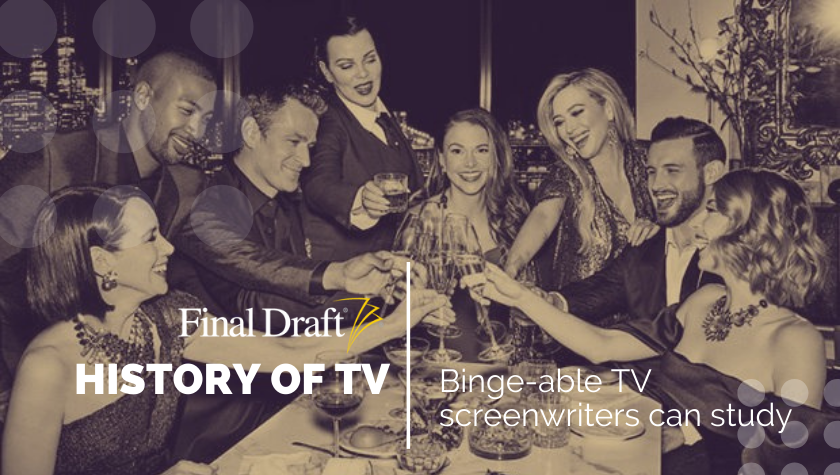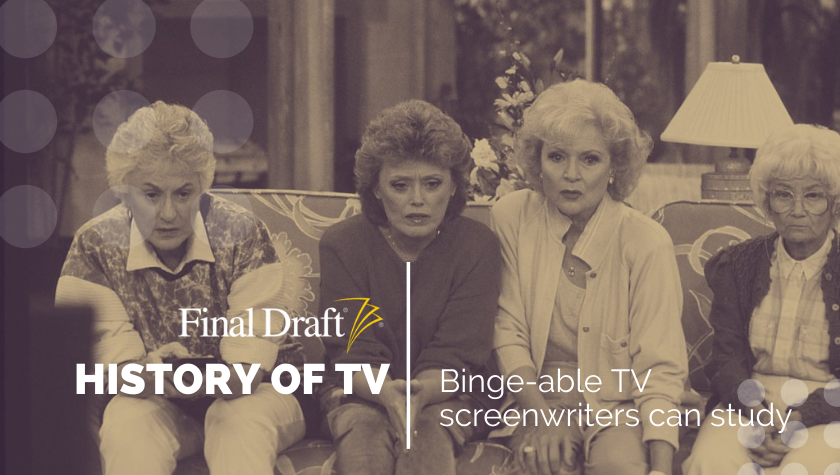History of TV: How 'Sex and the City' Put HBO on the Map
March 11, 2021
Discovering Sex and the City halfway through university proved detrimental to my already poor sleep habits. I binge-watched entire seasons and I credit it with one of my long-standing relationships: Mr. Big. Though in my case he’s a six-pound Yorkie I named after Carrie Bradshaw’s on-again, off-again paramour. She was a writer, I was majoring in it. I had an Apple laptop I never backed up, either. But what about the show?!
Time named it on its list of “All-Time 100 TV Shows” in 2007. It spawned two feature films, a short-lived CW prequel, and garnered a lot of awards: eight Golden Globes®, seven Emmys® (of its 54 nominations) for Outstanding Casting, Costumes, Directing, Lead Actress, Supporting Actress and Comedy Series, and three Screen Actors Guild Awards®.
Maybe the best part about Carrie Bradshaw’s world, though: it was pure escapism. I mean, how else could she have afforded that fabulous little apartment and all those outfits on a freelance journalist’s income? But does Sex and the City have more to offer beyond cotton candy for the brain? Possibly.
Beyond the Blahniks
Let’s be real: the costume department made the clothes and accessories practically their own characters in the show — those Manolo Blahniks, nameplate necklaces, and too many outfits to count — thanks to costume designer Patricia Field’s guidance. The insane, glossy mix of high and fast fashion created a unique aesthetic that has Instagrammers going to this day — and Instagram wasn’t even a thing when Sex and the City premiered. Fashion was integral to the storyline at times; unsurprising for a show set in one of the fashion capitals of the world back when models, modelizers and designers were still essential to that industry, before Hollywood celebrities blurred the lines. Materialistic? Yes. A way to epitomize this big-city lifestyle — and not just any city; New York City, the stuff of dreams city — the characters inhabited? Double yes. If New York City was the show's fifth main character (according to the show's creator, Darren Star) the fashion was its sixth.
More important than the outfits that usually revolved around the shoes was the silver-screen friendship between Carrie Bradshaw (Sarah Jessica Parker), Samantha Jones (Kim Cattrall), Miranda Hobbes (Cynthia Nixon), and Charlotte York (Kristin Davis). Their bond was inspiring, even if not always realistic. I don’t know a lot of women who could uphold that level of brunch, shopping and parties when they’ve got a baby at home. But maybe that’s Manhattan?
What did feel realistic was that their friendship also wasn’t perfect. The writers room, which was largely female, made sure the women didn’t just face external obstacles; they faced each other at times, too. Their friendship, however, was the sun around which all other relationships in the show orbited. No man was more important than “the girls” — even if Carrie, Samantha, Miranda, and Charlotte spent most of their time together talking about said men. The show was, after all, about sex.
The sex talk
The having of, the gossiping of over Sunday brunch, along with the adjacent social issues of sexuality, safe sex, and femininity: it was blatant, it was honest — something that felt entirely new on television at the time. In a little under 100 episodes, it pretty much showed us more than 100 different scenarios. While the show may have fallen short in other areas, this is where it performed the best. Sex and the City showed single women as women with desires, both of the career and relationship variety, who weren’t necessarily into getting married and having kids. They wanted to have fun, make money, and have good sex. It was revolutionary enough to help make HBO the hit network it became.
In the very first scene with all four women celebrating Miranda’s birthday, the pilot kicks off with asking if women can “just go out and have sex like a man…without feeling?” In each character’s response we were immediately introduced to who they were, their attitude toward sex and love, and the conversational tone alone set up the series — all in one conversation.
What followed was a steady stream of men and sexual exploration for six seasons. Carrie’s voiceovers of the column she was writing that week tuned us into the theme we’d watch unfold in each episode. It provided structure, insight, and ensured the audience left with exactly the question lingering on their mind that the writers had been exploring that episode.
Based on the book
Speaking of Carrie’s column, it was based on writer Candace Bushnell’s column for The New York Observer, which was published as an anthology before creator Darren Star (of Beverly Hills, 90210 and Melrose Place) and his executive producer Michael Patrick King turned it into an HBO hit.
Sex and the City created a wildfire effect in publishing and fashion trends (not to mention Cosmo, anyone?) and talk about meta: after the phrase, “He’s just not that into you” was uttered on the show, it became a bestselling book that was turned into a movie. Hollywood loves its IP, and Sex and the City has plenty.
In retrospect
But was it a good show? It had a lot of memorable moments. Like, a lot. Was it funny? Absolutely. Was it inclusive? In some ways. In other ways, it definitely wasn’t. When looking back, no piece of art is perfect. Taken for what it was — daring and a trailblazer for other female-centric shows like Girls and Broad City — Sex and the City has an uncontentious place in pop culture history.
I, for one, will be tuning in to see how HBO Max’s And Just Like That reboot will measure up — and raise the bar, hopefully, on the original. Can’t wait? Catch the OG on HBO Max, Hulu, and Amazon Prime.
Written by: Karin Maxey
After seeing her first big screen movie 007: License to Kill at age six, Karin naturally became obsessed with writing action-infused stories. The next time she’d see Benicio del Toro was in person, at the 68th Cannes Film Festival—he was there for the Sicario red carpet, she was there for her first produced short film in the basement of the Palais…same-same. In between, Karin earned a Creative Writing Degree and landed management at Echo Lake Entertainment. Her scripts have been a Big Break Top 3 finalist, HollyShorts Film Fest Official Selection, and a multi-Screencraft competitions semi-finalist. Karin is also a screenplay editor who delights in the process of polishing writers' work for submission. You can find her at www.writergirlkarin.com.- Topics:
- Discussing TV & Film




